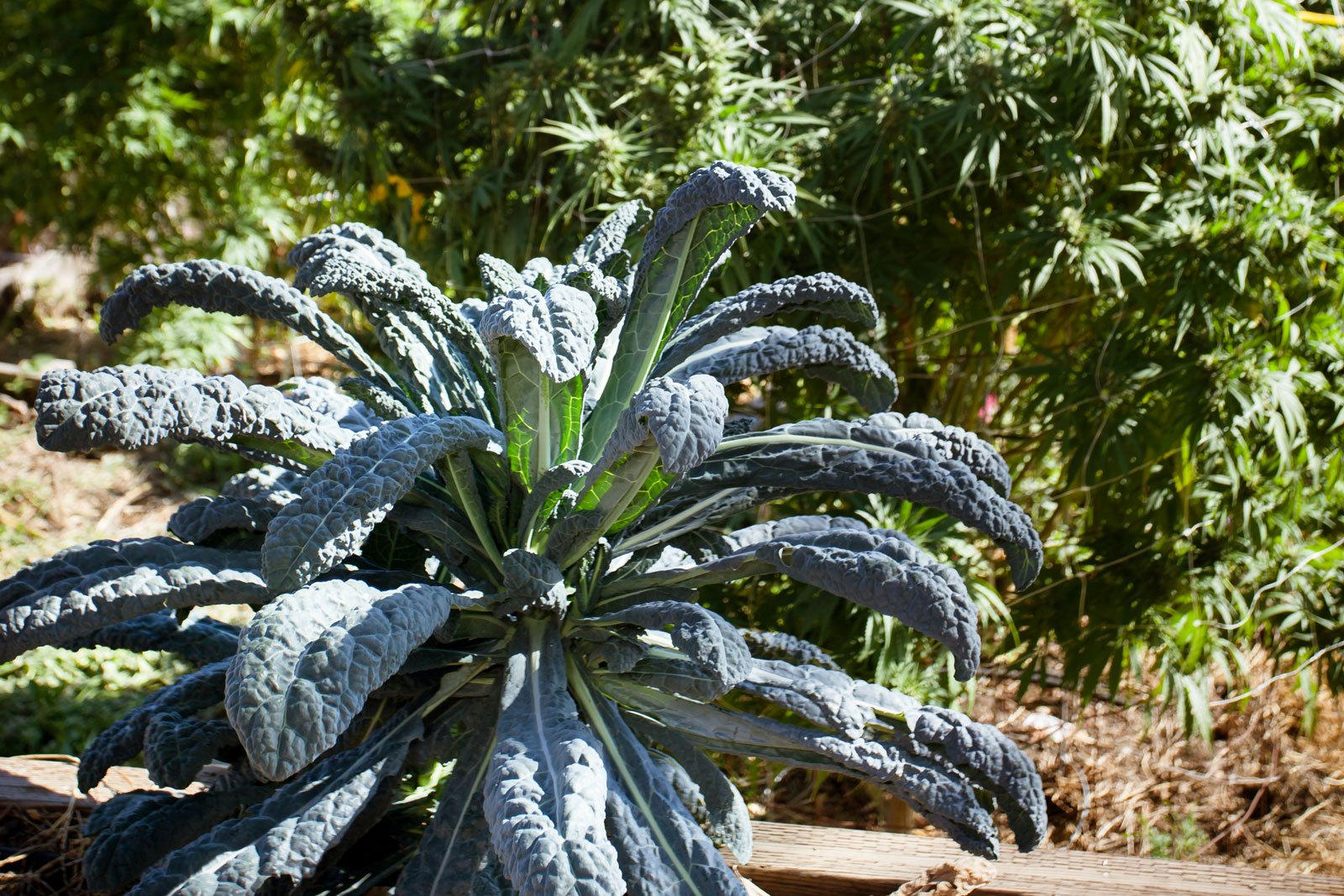Better Bud, Better World
Cannabis farmers embrace permaculture
Photo by Amy Kumler
Since the emergence of the legal market in 2016, disagreement about the best way to grow cannabis (Indoor or outdoor? In a ground or in a pot? What is clean, what is not?) has intensified. As debate swirls, some small growers in Humboldt County quietly continue to farm cannabis using methods that not only produce great cannabis but counter global warming. They call themselves “regenerative farmers” and their method is permaculture.
Earth care
Daniel Stein of Briceland Forest Farm is one of Humboldt County’s many regenerative farmers. Born in Humboldt, Stein and his family live full-time on a small farm near Redway, California. For the last 18 years, he has cultivated vegetables, raised goats and grown cannabis. Stein’s farm follows the practices and principles of permaculture, which mimic the design of natural systems. Regenerative farmers reuse everything for the benefit of the whole — the needs of one element are met with the byproducts of another in a continuous loop.
Soil is key to the cultivation of good cannabis and to maintaining an environmentally sustainable grow. Stein and his colleague Jesse Dodd explain that soil is a living ecosystem where microorganisms and the plants themselves interact in complex cycles to move water, oxygen and nutrients into the earth and back out again.
Stein’s 5,000 square-foot grow is planted with mixed crops in mulched beds and accompanied by non-producing, bee-loving plants that enrich and protect the soil. Stein and Dodd say growing cannabis in the ground produces the healthiest plants. Clearly soil enthusiasts, they even discuss terroir, a French word referring to the taste a particular place imparts to the plant.
Dodd describes how regenerative farming plays a role in countering climate change. He explains that planting methods and soil management are particularly important. Regenerative farmers like Stein and Dodd encourage carbon sequestration — the process by which carbon dioxide is removed from the atmosphere — in their gardens. Rather than disturb the soil surface, they feed it by layering carbon and nitrogen-rich organic material on top of the ground and planting into it. Microorganisms and worms then break this material down into fertile soil.
Illustration by Jacqui Langeland.
“The plant biomass is ultimately eaten by soil biology and turned into living soil humus,” Dodd says. “This is an act of carbon sequestration that all plants do for us but only if they are allowed to return to the soil.”
Mixed crops are also essential to producing and maintaining living soil. In this mini-ecosystem, some plants repel pests, some share nutrients and others feed the soil and protect it from drying out. Everything works together to support what’s going on below the surface. Aside from its environmental benefits, Dodd says regenerative farming in soil protected with mulch and other plants makes for a much cleaner bud. According to Dodd, “These are truly clean flowers because they are grown with living soil in a healthy environment with no need to spray or feed.”
Water also contributes to the power of the soil. It works with bacteria and fungi to break down plants and other organic matter, which becomes carbon-holding humus. Regenerative farmers routinely build earthworks like swales to slow, spread and sink water. Holding water in the ground not only helps plant nutrition but recharges vital groundwater. Capturing rainfall also reduces fossil fuel use in processing and transporting municipal tap water. Ponds and roof-harvesting systems capture and store rainfall for use during dry months.
Regenerative farmers also say the health of forests directly impact the health of their crops. Properly managed forests deter wildfire and provide habitat for predators that eat pesky rodents that might otherwise nibble young cannabis plants. Forests, like living soil, also have the capacity to sequester enormous amounts of atmospheric carbon and are integral to the earth’s water cycle. Local expert Dan Mar of High Tide Permaculture and Compliant Farms recommends thinning forest canopies so that sunlight reaches the ground. Without some sunlight, forests lose their diversity and become more vulnerable to wildfire. Wood from felled trees can be utilized for other purposes including firewood, managing runoff and promoting soil fertility. As Mar notes, “Reducing fuel loads, releasing hardwoods and preventing further fir encroachment of our oak woodlands and native grasslands are simple things that every property should be doing.”
Growing toward the future
By design, cannabis farmers who practice permaculture run small, human-scale operations. As the market is flooded with product from large monoculture grows, regenerative farmers are hoping consumers will choose to purchase cannabis they know has been grown cleanly and responsibly. Stein has obtained a temporary state license, but with many thousands of dollars spent on licensing and permitting, he’s unsure his cannabis business will remain profitable.
The next couple of years will tell whether he can continue as is or will have to make a change. Until then, this small family farm is staying the course.
“We are surviving by continuing to do what we have always done,” Stein says. “Grow the best weed we can while making sure we are improving the land we are using.”
Trudy Thomas is a freelance writer based in McKinleyville.


